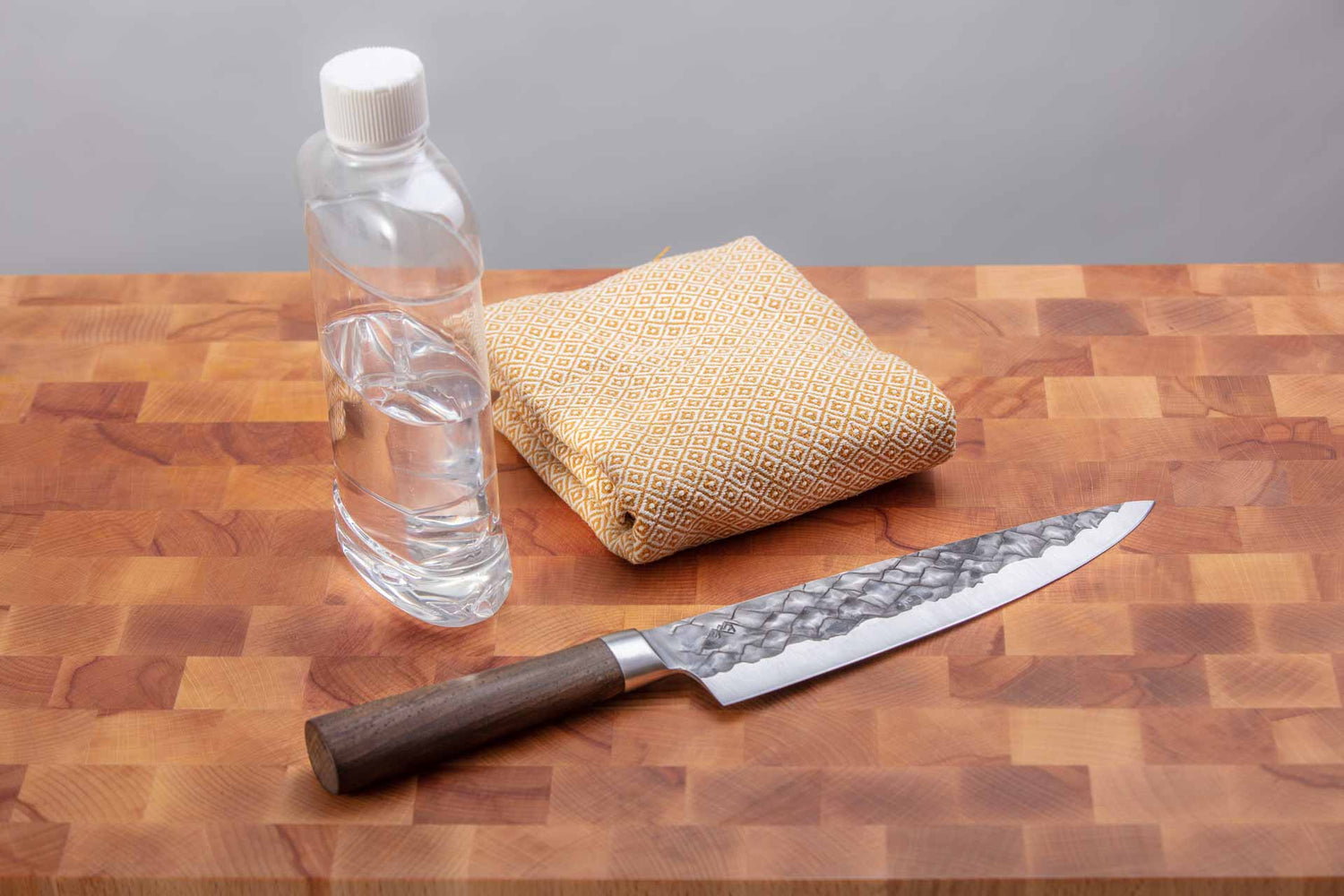A quality knife taken care of will last you a lifetime. That means caring for the natural hardwood handle too! BARE Knives are all fitted with a natural wenge hardwood handle. Our handles are sustainably forested, CO2 compensated, and just feel right in the hand. Wood-care really boils down to oiling the wood every now and again. Let’s talk about specifics!
WHEN TO OIL?
The guidelines in this how to apply to most wooden surfaces. Like found on our magnet strip for example. Cutting boards should be maintained just the same, but make sure to choose food-safe non-hardening oils.
A good rule of thumb is to oil any wooden kitchen utensils every month the first year after purchase. After the first year once every year should suffice. We recommend going by eye here. If the wood looks dull or dried out: it’s time to oil.
Please note: wood that has been treated with a layer of paint or lacquer should never be oiled.
WHY DO YOU NEED TO CARE FOR WOODEN HANDLES?
Wood dries out slowly over time. Some types of wood faster than others. Our hardwood Wenge handle is very rich in natural oils. This means it will take quite a while to show any signs of wear and requires little maintenance. But eventually any wood can dry to the point where it will crack. To prevent that we need to moisturize it with oil. Furthermore: oil will bring out the natural grain of the wood and make it more beautiful. What’s not to like?

WHAT OIL TO CHOOSE?
This really comes down to personal preference. Here are a couple solid options:
- Mineral oil - Our favorite option. Widely available (at IKEA for example), cheap, odorless, flavorless, and food-safe. Mineral oil is perfect for cutting boards too. Excess oil should be rubbed off. Mineral oil is non-hardening so will not leave a sticky residue.
- Grapeseed oil - Grapeseed oil is also a good option for your wooden surfaces. It is a good bit more expensive and harder to come by but works much like mineral oil.
- 'Cutting board oil' - If you search the web you'll find special cutting board oil. Most of these products are blends of different non-hardening food safe oils. So while a tad on the expensive side, fine for handles, cutting boards and any knife handles.
- Almond oil - Again a non-hardening food safe oil, fine for most wooden surfaces. However, any nut-oils could trigger allergic reactions in people with nut allergies, therefore we would not recommend it.
- Boiled linseed oil - This oil is hardening and not safe for cutting boards. An age-old choice among woodworkers. Boiled linseed oil leaves a beautiful patina that polishes over time with sustained use. As with Danish oil any excess should be carefully removed as this oil will harden to leave a lacquer like layer.
HOW TO APPLY?
Simple! Just take an old rag and rub some oil on the handle, magnet strip or any hardwooden surface. Give the wood some time to soak up the oil. About an hour will do, but longer can't hurt. Then clean off any excess oil with a dry rag. If the wood absorbs all the oil and feels dry, simply repeat the process. Hardening oils should be left to set for a day, mineral oil can be used straight away.

WHY WOULDN'T YOU JUST USE COOKING OILS?
In a pinch any oil is better than none. However: cooking oils will leave your handle or cutting board tacky and can leave a rancid smell over time. So we do not recommend using cooking oils on your wooden surfaces.
More about general knife maintenance can be found here.






Leave a comment
All comments are moderated before being published.
This site is protected by hCaptcha and the hCaptcha Privacy Policy and Terms of Service apply.